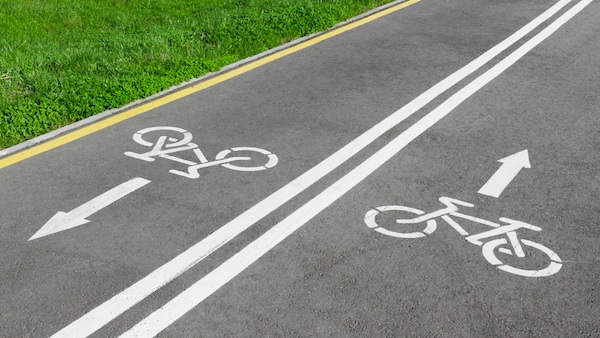Advantages of Riding on an Unbroken Bike Path

One of my favorite aspects of cycling is the feeling of freedom, and ability to take in my surroundings while exercising. Although I love long paths in my city that take me either along the beach or farmlands, these routes typically require several stops due to traffic lights and traffic overall. When I’m in training mode one of the most practical routes I use is a local golf course that goes around in a four mile loop, with no traffic lights or stops. There are several advantages I’ve found with this route as a beginner cyclist and now avid rider. Here are some advantages for riding on an unbroken bike path despite what level of experience you have riding.
Bike Handling
Riding on a continuous route allows you to practice several things required when riding, in particular if you are just learning how to ride. For one, you are able to practice the maneuvers required in turning, such as slightly leaning your body, weight distribution, and bringing up the leg closest to the turn. You can also practice wide turns versus sharp turns, because both skills are needed in different riding situations. It is ideal to practice this along a continuous stretch with no concerns for oncoming traffic, or having to clip and unclip. Also, it gives you the ability to play around with your gear shifters and familiarize yourself with the different speeds and your comfort level with each one. This is even better if your unbroken path is a flat one so you don’t have the resistance of any rolling terrain. Typically, with this type of route you will experience a tailwind and headwind, which may affect which gear you use when going into a headwind, depending on your fitness level. Playing around with gear shifting will teach you which gear is most efficient in each situation.
Bike Position
This type of path also lends itself to practicing bike positions without having to be as vigilant as you would be if riding in a higher traffic area. If you’ve recently purchased a tri bike, you can practice getting down in the aero bars, and still maintaining balance. I remember as a beginner I had a difficult time with this as I attempted practicing in a bike lane next to oncoming traffic. I was so nervous, and white knuckled on my aero bars I nearly rode off the bike lane into trees that were on the right of me. After this experience, I decided to practice in a low traffic area like my neighborhood. I would practice staying aero and gear shifting in this position as well as reaching down for my water bottle without having a tragically, embarrassing fall. Also, if you own a road bike you can play around with the position that is the most comfortable for you, and leaning forward on the road bars when going into a headwind.
Another position that is important to practice is pedaling off the saddle as this offers a few advantages as well. This requires some practice so you may become comfortable with the “dancing” motion required with this technique. When I ride on this route, I use this motion a lot to gain more speed after turns. Additionally, to simulate climbing since it is a flat route. This specific exercise helps your legs get stronger, and makes you more comfortable whenever you are actually climbing a hill or bridge. Since it is a continuous path I tend to time myself and do intervals of one minute pedaling off the seat and two minutes of riding with high rpms.
Training
Having a continuous path is ideal for interval training because you don’t have to interrupt your work sets by stopping at traffic lights or signs. You’re able to experience the advantages of interval training, and have a great workout. Also, you can fully focus on your gear shifting, pedal stroke, and RPMs. It is especially beneficial if you are completing a ride in a cycling group, and take turns drafting and pulling.
It is also great to practice different cycling drills within a workout without interruption. Some examples may include “spin-ups” where you’re in an easy gear and are working on maintaining high RPMs; Also, “pick-ups” where you do work intervals faster than your race pace. Another good drill to complete on this route is “isolated leg work”, where you complete intervals pulling with one leg, while the other one is “resting.”
Safety
When comparing this route to one which requires me to ride with traffic or alongside a busy road, I find this one to be a lot safer. As a beginner or someone who is still not comfortable riding with traffic you can still enjoy cycling without the constant worry of being hit. These paths typically are in low traffic areas with several signs indicating it’s a bike path and to respect cyclists. Therefore, the few cars that drive in these areas are aware that it is a common cycling location. There are also minimal, if any parking lot entry/exits so you don’t have to be in a constant high alert environment. Lastly, many cyclists ride on these routes so if you have any bike trouble such as a flat tire, you can count on someone being nice enough to stop and help you.
Although riding on an unbroken bike path may not be the most scenic route, as you can see it does have its advantages for all levels of cyclists. All of which, can improve your riding ability and make you a stronger cyclist.